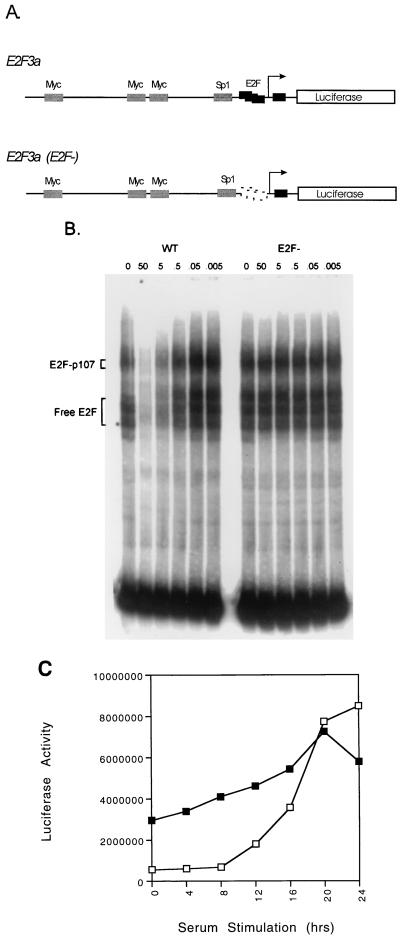FIG. 3.
E2F-dependent regulation of the E2F3a promoter. (A) Schematic depiction of the E2F3a wild-type promoter and the promoter containing alterations in the E2F binding elements. (B) E2F binds to the E2F3a promoter. Gel mobility shift assays were performed with a nuclear extract from G1/S-arrested mouse embryo fibroblasts and an end-labeled DNA fragment derived from the DHFR promoter that contains two overlapping E2F binding sites as the probe. Competition assays were performed as described in Materials and Methods using the indicated amount (in nanograms) of PCR products derived from either the wild-type E2F3a promoter sequence spanning the E2F sites or the mutant promoter in which the E2F sites were altered by point mutations. The positions of either the E2F-p107 complex or free E2F complexes are indicated. (C) REF52 cells were transfected with 4 μg of the wild-type E2F3a-luciferase plasmid (□) or 4 μg of the E2F3a (E2F−)-luciferase plasmid (■), together with 2 μg of CMV–β-galactosidase. Transfected cells were processed as described in Fig. 2. Luciferase activity was normalized to β-galactosidase activity.

